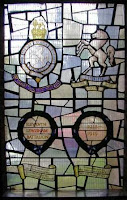"The Queen’s Own Royal West Kent Regiment Living History
Group has raised the funds required to erect a new memorial dedicated to the
men of the Royal West Kent Regiment. It will be sited where the regiment first
saw action on the morning of 23rd August 1914 at Tertre in Belgium.
The memorial was constructed using Kentish ragstone and has
been completed in time for the community dedication on 23rd August 2013. The
dedication will be led by the Mayor of Tertre and Saint-Ghislain.
Major Peter White M.M. (Retd) will represent The Queen’s Own
Buffs Regimental Association on behalf of the Regimental Association President.
The memorial will be the main focus for the local centenary
commemorations in 2014. These will be supported by The Queen’s Own Royal West
Kent Regiment Living History Group, The Queen’s Own Buffs Regimental
Association, and representatives from The Princess of Wales’ Royal Regiment."
 11th (Service) Battalion (Lewisham) of the Regiment was formed
at Lewisham on 5th May 1915 by the Mayor and a local committee. It trained at
Catford and was attached in July 1915 to 118th Brigade in 39th Division, then transferred
in October to 122nd Brigade in 41st Division. The Battalion moved to Aldershot
in January 1916. On 3rd May 1916 the Battalion landed in France. In November 1917 it
moved with the Division to Italy but returned to France in March 1918. The
Battalion was disbanded in France on 16th March 1918.
11th (Service) Battalion (Lewisham) of the Regiment was formed
at Lewisham on 5th May 1915 by the Mayor and a local committee. It trained at
Catford and was attached in July 1915 to 118th Brigade in 39th Division, then transferred
in October to 122nd Brigade in 41st Division. The Battalion moved to Aldershot
in January 1916. On 3rd May 1916 the Battalion landed in France. In November 1917 it
moved with the Division to Italy but returned to France in March 1918. The
Battalion was disbanded in France on 16th March 1918.
The Battalion is commemorated in St Laurence’s Church, Catford with a stained glass window

